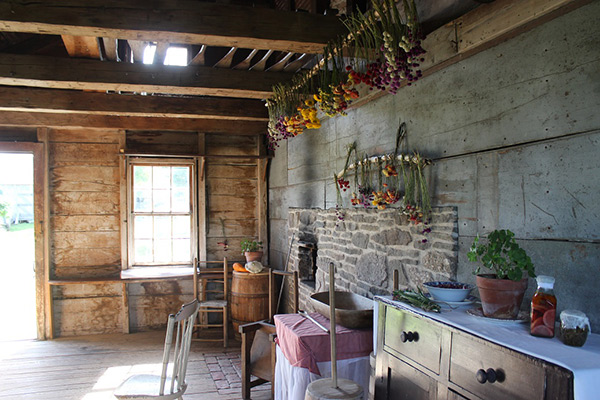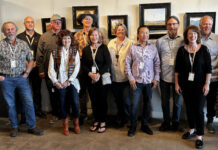– Bob Bahr reporting, Editor PleinAir Today –
For three days, artists at a living museum in New Brunswick, Canada, painted scenes from life in the 1800s in Maritime Canada at the Paint the Past event at Kings Landing. What did they see?
Lead Image: A typical scene that painters could depict at Kings Landing during the Paint the Past event
Kings Landing is a historical village located about 20 minutes from Fredericton, and it showcases many of the activities New Brunswick residents of past centuries engaged in, from logging to candle-making. The things the models do change periodically, in part based on season. Lynn Thornton, the events coordinator for Kings Landing, points out that visitors may see anything from the harvest and preparation of buckwheat to the operation of a horse-powered sawmill. During the event, extra activities are planned to provide artists with many potential subjects. The village landscape is populated with bonneted ladies, whiskered gentlemen, and many varieties of livestock. The museum features historic homes built by United Empire Loyalists that have been restored to depict the living conditions and technology of those times. There is a lot to paint.
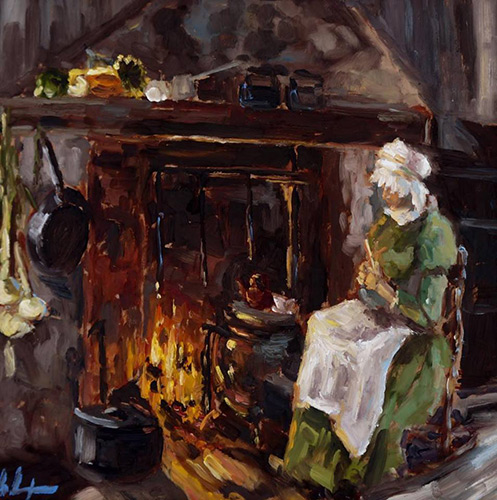
In the summer the village’s numbers are swelled by “visiting cousins,” a summer camp program that offers modern-day tweens and teens a chance to live as did children in the 1800s. But for a few days in September, Kings Landing is a destination for plein air painters. Costumed interpreters were found in each of the historic homes, and were often willing to pose for the painters. Despite the brevity of the event, the show of work at the end filled the hall at the King’s Head Inn, the meeting hall on site.
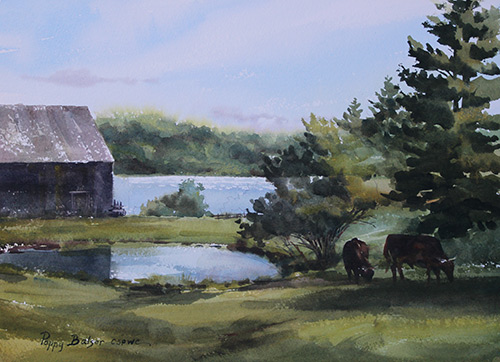
There were awards given at Paint the Past. Sophie Lévesque won First Place with her painting “Mary,” earning her $1,000. She was also named the artist-in-residence at Kings Landing for a year. “This experience has been wonderful,” comments Lévesque. “The landscape and subject matter that Kings Landing can offer to plein air painters is endless and beautiful. It was to my excitement and surprise that I was chosen as winner, and to be the artist-in-residence at Kings Landing is going to be a wonderful adventure. The painting of Mary is, I believe, an iconic depiction of what Kings Landing is all about: a timeless place.”
Poppy Balser won Second Place for her watercolor “Grazing in Glory.” Simone Ritter won Third with “Boiling the Wool.” Balser remembers spending a week at the village as a visiting cousin in the 1980s. “One of the things I remember is that upon arrival at the dormitory, we had to stuff our mattress sacks with straw,” Balser says. “We were told to do a good job of it, as that was what we would be sleeping on all week. When I found out that the Paint the Past event was providing ‘no frills’ accommodations to artists in the same dormitory building, I wondered if I would have to do that again!”
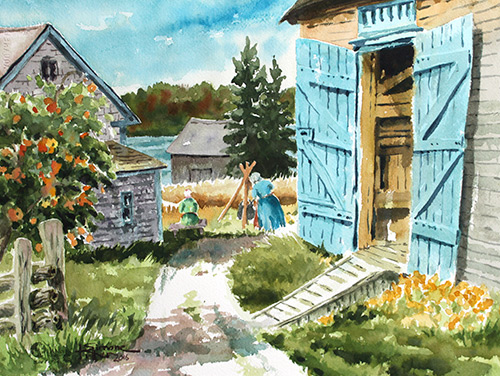
Balser offered an explanation of what Paint the Past feels like for a visitor. “If you have read the Laura Ingalls Wilder books (Little House on the Prairie and those that came before and after) that is the time period. It is most like her third book, Farmer Boy, where she portrays the life of her husband, Almanzo, as he is growing up in relatively settled upstate New York. The interpreters were excited to have painters coming to paint amongst them and I was excited to get to the painting.”
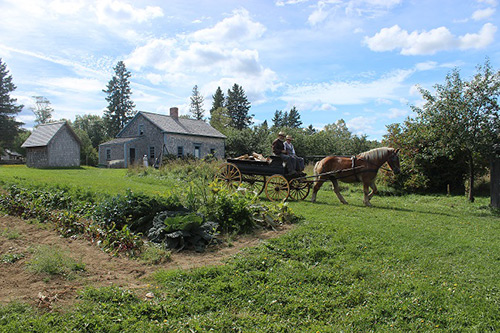
It appears that many of the 20 artists who participated in Paint the Past will be back next year. “The staff introduced visitors and artists alike to the life’s hard work of yesteryear in story and practical showcasing of everyday tasks such as cutting wood, spinning yarn, harvesting potatoes, and so on,” says Ritter. “It was a great honor being a part of the event, and I hope to return again next year.”

